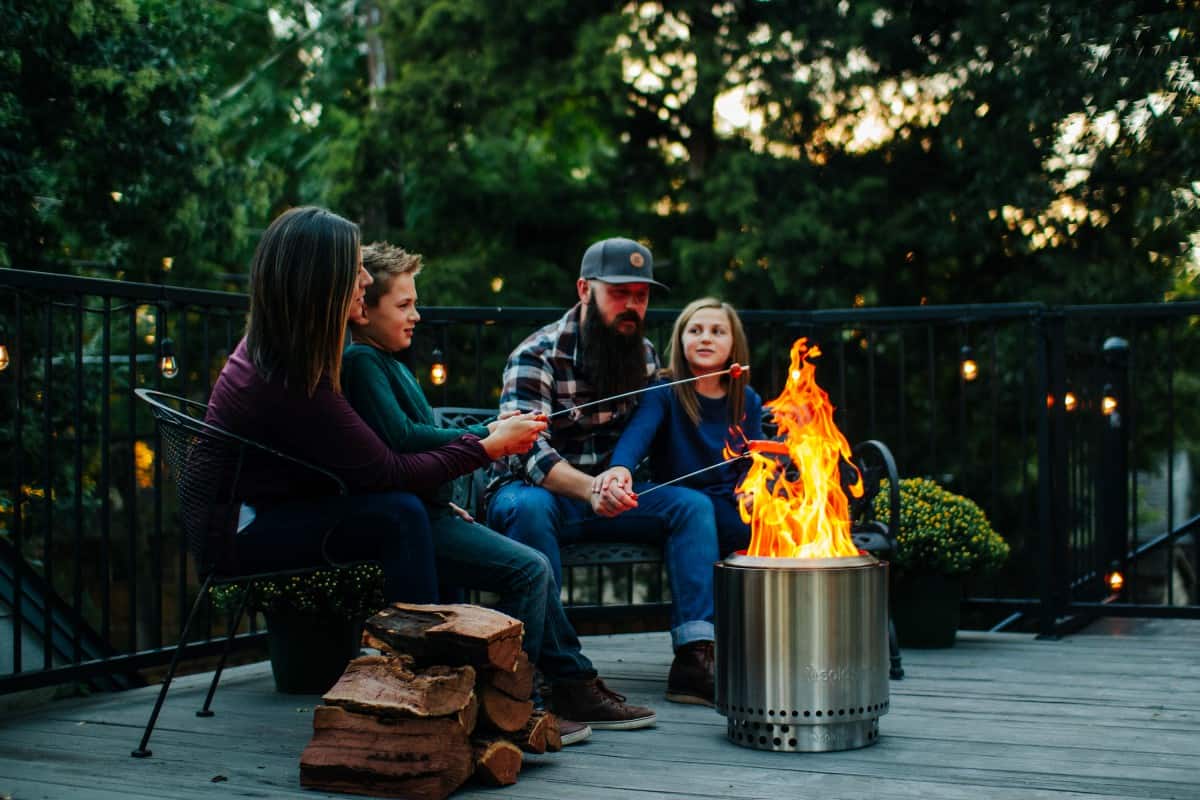If you’re thinking of purchasing (or you have already purchased) a solo stove, you might be wondering where you can safely set it up for use.
You don’t want to end up moving the fire pit later because you realize your initial choice of site wasn’t suitable. The burn mark on my lawn is testament to this ?.
Here, we’re going to discuss some of the places where it’s safe to use a Solo Stove and why these places are safe, so you can get the most out of your new toy without causing risks to you or to those around you.
1) On A Heatproof Surface
The underside of your fire pit is likely to get very, very hot!
After all, there’s a lot of burning fuel in there, which may be maintaining its heat for several hours. That means you need to think about what surface the fire pit is going to rest on.
You can safely use your Solo Stove fire pit on concrete, pavements, gravel, stone, slate, or dirt. These surfaces won’t suffer from the heat of the fire pit (though any flammable debris must be cleared off the dirt) and you can use the fire pit safely on them. It may mark the surfaces, but won’t do any lasting damage.
What about other surfaces? After all, if you’re out camping you might find that concrete is in rather short supply. If you’re situating your fire pit in your backyard, you might well want to put it on decking, on grass, or on other combustible surfaces.
Not everyone has access to a nice stone or other non-flammable space in their backyard. However, it’s not safe to use your fire pit on heat-sensitive surfaces – unless you have the right tool, which brings us to a handy little tool Solo Stove has developed.
A Solo Stove Stand
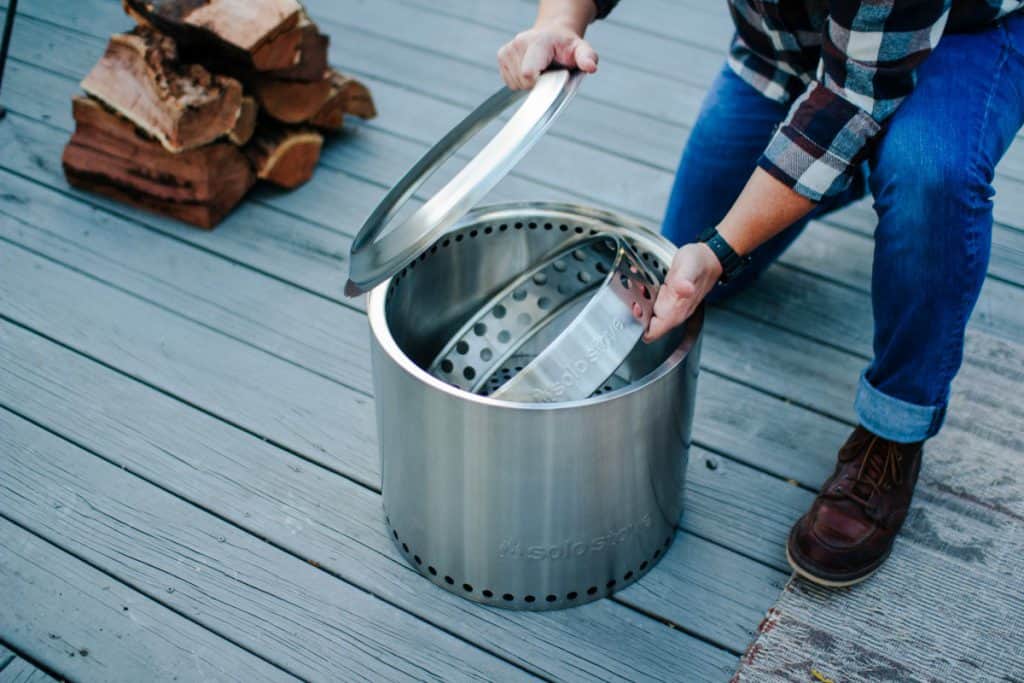
A fire pit could damage your decking or grass if you use it directly on them; it’s going to produce a lot of heat, especially on its underside. It could cause an uncontrolled fire if set on very dry grass or flammable debris such as twigs.
Instead of having to store and put down a protective, heatproof surface every time you use your fire, consider investing in a Solo Stove Stand.
The stand will lift the Solo Stove up into the air, meaning you can use your stove on pretty much any surface, provided it’s flat and stable. The stand is perfect for protecting whatever is underneath your Solo Stove, and massively expands the number of safe surfaces you can use the fire pit on.
The stand is great if you’re uncertain about your burning surface, giving you peace of mind that the fire pit won’t mark or damage what’s beneath it.
2) In The Open, Away From Structures
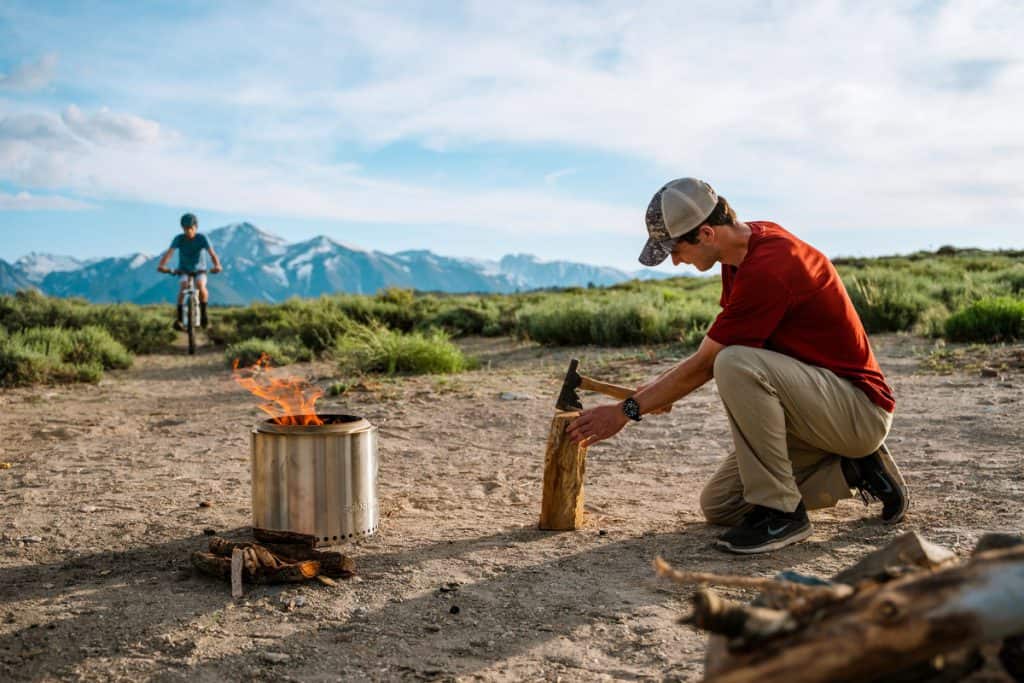
Make sure that you only use Solo Stove fire pits outdoors, where there is plenty of ventilation. These fire pits are not designed for indoor use under any circumstances, and the build up of fumes could be very dangerous.
Fire pits should only be used where the smoke can freely dissipate. Even low smoke fire pits like Solo Stove products will produce fumes as they burn the wood, so this is important.
Don’t burn Solo Stoves beneath an awning or cover either; while the smoke may be able to disperse around the edges, it won’t do so as freely and could still cause problems.
You will also find that Solo Stove’s safety guides recommend a space of at least 20 feet between a fire pit and any overhang, meaning that awnings or covers could get damaged or even catch fire if you use a fire pit beneath them.
Using your fire pit out in the open will keep you, your guests, and any overhead features safe.
You should also place the fire pit at least six feet away from any structures. If the wind picks up unexpectedly or your fire pit somehow gets kicked over, this will give you the leeway needed to avoid any accidents.
Building a fire pit alongside a shed or building is not only dangerous, but could cause smoke or heat damage to the building as well.
3) On Stable Ground
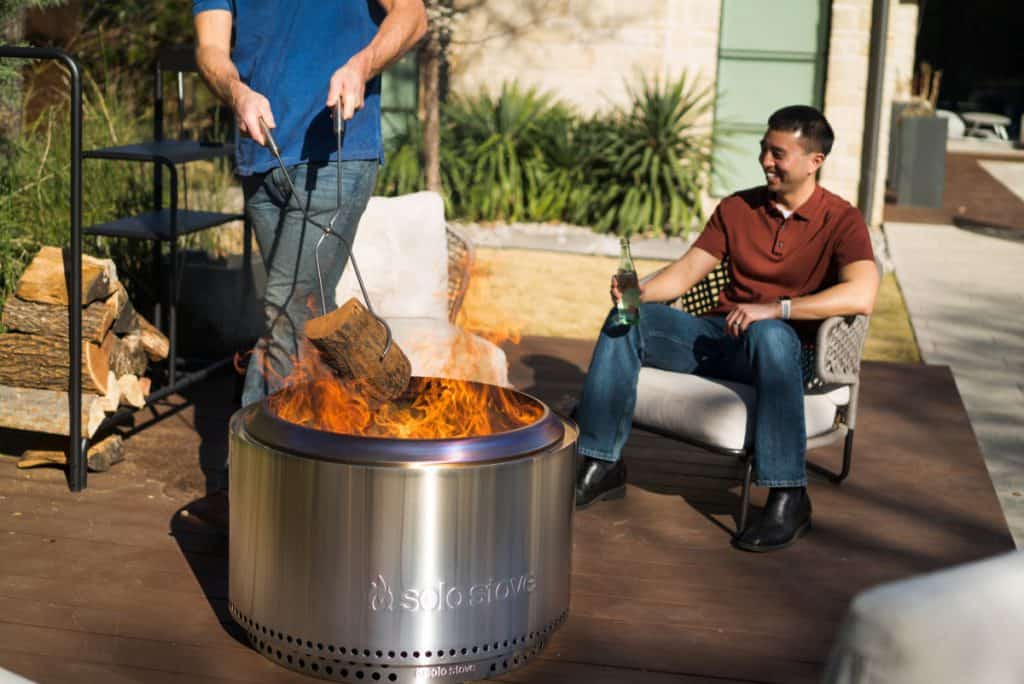
While it might be a nuisance trying to find a flat surface if your backyard is bumpy or uneven, this is important. You don’t want any chance of your fire pit getting tipped over, and if it’s sitting on rocky, sloping ground, this could happen.
Once you’ve got your fire pit where you want it, experiment a bit to test its stability (without lighting it, of course!). Try nudging and rocking the fire pit, and see if you’re happy with it. Remember that it could get bumped by a guest while lit, and think about what would happen if it fell over.
You should create a level surface for your fire pit if necessary. Don’t prop it up with stones or other easily-dislodged items; invest time in making a safe space for it to sit in.
This might be frustrating if you’ve taken a fire pit camping with you and don’t want to spend time trying to find or make a level surface, but it’s very important to the safe operation of the fire pit. Keep everyone safe and make sure the fire pit is totally stable before you light it.
4) On Still, Calm Days
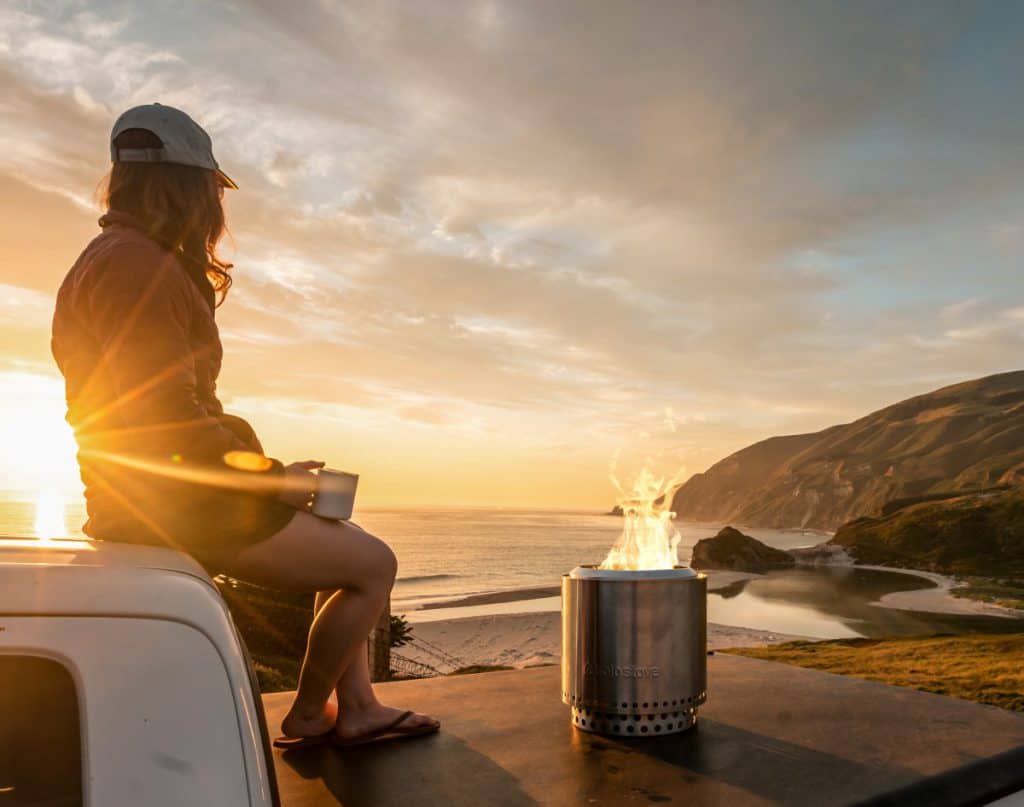
It might sound obvious, but you should not use your fire pit anywhere – regardless of the other safety features – if there is a lot of wind.
High winds will fan the flames of the fire, making it behave unpredictably. They may cause the fire to flare and dip unexpectedly, which can make it hard to control.
Winds can also blow the flames higher, or send sparks flying out of the circle you have cleared, potentially onto flammable materials nearby. If something catches, it will be much harder for you to put it out quickly if the weather is windy; the wind will fan the flames and spread them very quickly.
Choosing calm days for your fires will maximize safety and ensure the fire is predictable and easy to manage. Any stray sparks which do escape should be easy to put out, and won’t have time to turn into proper fires.
It’s also pleasanter to sit around a fire if you don’t have high winds roaring in your ears! If you’re planning a gathering, check the weather and predicted wind speeds before you light your fire.
If the wind starts to pick up while you’re using your fire pit, consider the context in which you’re using it, the potential risks, and err on the side of caution when making a decision about whether to put it out or not.
5) In An Existing Fire Pit
Solo Stoves can be used safely in a fire pit you already have. This is great if you want to make your fire pit a little more efficient, and take advantage of safety features such as stone walling, etc. If you’ve already got a fire pit in your back yard, you should definitely consider this option, especially if you are a little nervous about the fire.
Most existing fire pits also have a fire-proof or at least fire-resistant area around them, such as stone. This is perfect protection from any wayward sparks which might catch on flammable material.
Fire pits also tend to be set in open areas, and may even have seating around them – so they really are the ideal spot for situating your new Solo Stove fire pit.
Solo Stove recommends leaving a ventilation gap so that the Solo Stove fire pit can still draw in air properly, maintaining its highly efficient burn. They say that 4-6 inches should be sufficient, so make sure there is a gap all around the circumference of the fire pit to allow maximum airflow.
If your existing fire pit stands higher than the Solo Stove fire pit, this will make it wonderfully easy to cover the Solo Stove when you’ve finished with it and it’s cool.
Just drag a cover over the whole set up, and you’re done!
Conclusion
Fire pits are great fun for all the family, but it’s important to always operate them in strict safety conditions. Even if you are very experienced and a major fire enthusiast, the rules still apply to you.
But with some sensible precautions and a little bit of knowledge you’ll be able to enjoy your solo stove for many years to come.
p.s. Always keep water and a first aid kit to hand near your fire pit, and use the above information to ensure your fires are kept to the safety possible spaces.
Alright, that’s it for this article guys, if you found it useful then a share on social media or your website would be cool!
All the best
Steve
ps here’s a few articles related to this one you might find interesting:
5 Places You Can NOT Use Your Solo Stove (Explained)
How do Solo Stoves Work? (Explained For Beginners)
7 Smokeless Fire Pit Fuels That Actually WORK!
Heating a Garage with a Wood Stove/Burner-(A Beginners Guide)
All photos used with the permission of solo stove ltd.

